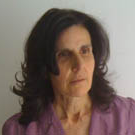The World in Infrared Imaging
A special issue of Journal of Imaging (ISSN 2313-433X).
Deadline for manuscript submissions: closed (30 September 2016) | Viewed by 102117
Special Issue Editor
Interests: infrared thermography; non-destructive testing; composite materials; personnel qualification and certification; safety at work regulation
Special Issues, Collections and Topics in MDPI journals
Special Issue Information
Dear Colleagues,
Infrared thermography allows the mapping of the surface temperature of an object, in a remote way, without contact. This represents a great advantage since measurements are performed without any alteration to the surface under examination and without any concerns related to safety at work. Infrared thermography can be used in a broad number of application fields and for many different purposes. Indeed, any process, which is temperature-dependent, may benefit from the use of an infrared imaging device.
The intent of this Special Issue is to collect experiences of leading scientists, but also to be an assessment tool for people who are new to the world of infrared thermography.
This Special Issue is intended to cover the following topics, but is not limited to them:
- Aerospace and industrial applications
- Applications to the cultural heritage
- Biomedical applications
- Civil engineering and buildings
- Non-destructive evaluation of materials (composites, masonry, ceramics, etc.)
- Novel methods of processing and analysis of thermal images
- Thermo-fluid-dynamics
- Novel applications of infrared thermography
Indeed, any work concerning the use of an infrared imaging device, as well the development of new application procedures and/or the treatment of thermal images, may fall within the scope of this Special Issue. Of course, papers must present novel results, or the advancement of previously published data, and the matter should be dealt with scientific rigor.
Dr. Ing. Carosena Meola
Guest Editor
Manuscript Submission Information
Manuscripts should be submitted online at www.mdpi.com by registering and logging in to this website. Once you are registered, click here to go to the submission form. Manuscripts can be submitted until the deadline. All submissions that pass pre-check are peer-reviewed. Accepted papers will be published continuously in the journal (as soon as accepted) and will be listed together on the special issue website. Research articles, review articles as well as short communications are invited. For planned papers, a title and short abstract (about 100 words) can be sent to the Editorial Office for announcement on this website.
Submitted manuscripts should not have been published previously, nor be under consideration for publication elsewhere (except conference proceedings papers). All manuscripts are thoroughly refereed through a single-blind peer-review process. A guide for authors and other relevant information for submission of manuscripts is available on the Instructions for Authors page. Journal of Imaging is an international peer-reviewed open access monthly journal published by MDPI.
Please visit the Instructions for Authors page before submitting a manuscript. The Article Processing Charge (APC) for publication in this open access journal is 1800 CHF (Swiss Francs). Submitted papers should be well formatted and use good English. Authors may use MDPI's English editing service prior to publication or during author revisions.
Keywords
- infrared thermography
- thermo-fluid-dynamics
- composite materials
- civil engineering
- aerospace engineering
- cultural heritage
- non-destructive evaluation
- infrared detectors
- heat transfer measurements
- building energy management






